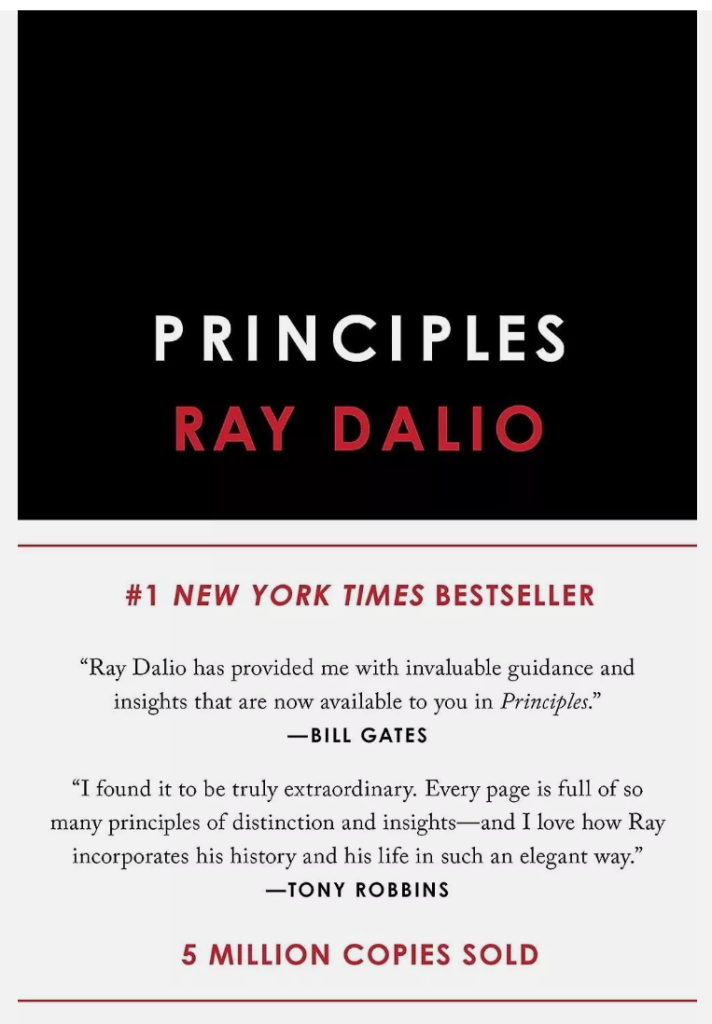Buy here: Ray Dalio: Principles
Investing is not easy; 96% of actively managed funds fail to beat the index. Warren Buffett would advise his family to place everything on indices. “Better the certainty of a good return than the hope of a great return.” In addition to a good return, it is also important to limit your risk as much as possible. But doesn’t less risk automatically mean less return?
You don’t always have to take more risk for a higher return. Or the other way around: most portfolios run too much risk for the return they achieve. Once more: “96% of actively managed funds fail to beat the index.” This article explains why this happens, and we make a proposal on how this can be improved.
Misconceptions about the traditional approach
To sketch a clear picture of the proposed strategy, it is useful to first take a traditional strategy as a starting point. In this article, we take a portfolio with a 60/40 ratio as an example of a traditional portfolio (see Figure 1). The basic idea behind a 60/40 portfolio is good, namely: Don’t put all your eggs in one basket. This portfolio can be compared to six eggs in one basket (stocks) and four eggs in the other basket (bonds). However, it is important to realize that there is a difference in the size of the eggs.
Stocks are more volatile
Shares are more volatile and therefore run more risk than bonds. So they have more influence on your portfolio, and therefore these eggs are larger. The equity eggs in this case are nine times as big as the eggs in the bond basket. What influence does this have on your risk, and is there still a good risk spread?
Nine times that much risk is a big difference. This is evident from an analysis of the losses of both components. Below you can clearly see that shares are much more volatile and therefore much riskier (see figure 2). Stocks are responsible for 90% of this portfolio’s losses. This form of division creates a feeling of security, while this is not justified. A form of false security.
Figure 2: Analysis of losses between 1985 and 2017.
How do you divide the risk?
It is better to divide it based on risk by weighing the volatility and incorporating this into your allocation. You calculate what percentage of losses a certain category has caused, and you increase or decrease the influence of a category by making it a larger or smaller part of your portfolio.
This approach gives you the opportunity to protect yourself against different economic situations. Take Ray Dalio’s All Weather portfolio as an example.
This is based on “4 Seasons,” which ensures that the prices move. This concerns higher than expected economic growth and inflation and lower than expected economic growth and inflation. In every season, there are other asset classes that do well. (see Figure 3).
Figure 3: Volatility of the asset classes per economic season
The All Weather Portfolio divides the risk equally over the 4 seasons.
You then arrive at the ratio mentioned below:
30% shares, 15% short-term bonds, 40% long-term bonds, 7.5% gold, and 7.5% other commodities.
You will see that a portfolio like this has a significantly better risk-reward ratio than traditional weighted portfolios (see Figure 4).
.
Results
All Weather has averaged a gain of 9.11% since 1983 through early 2019. Over the same period, a traditional 60/40 portfolio achieved 9.98%. While the 60/40 portfolio runs 37.9% more risk than the All Weather portfolio.
*calculated excl. inflation, incl. reinvested dividend. Rebalanced annually.
What Do Critics Say About This?
Many critics say that if you could tolerate these fluctuations, better results would have been possible than with the All Weather portfolio. However, the point of the All Weather portfolio is to limit volatility while maximizing profits. The truth is, most people can’t keep their cool during a crash. As a result, they sell out of panic.
Figure 5 shows that the All Weather portfolio achieves a better result than the standard 60/40 portfolio in times of crisis.
| Year | 60/40 portfolio | All Weather portfolio |
| 1974 | -12,19% | 1,86% |
| 2002 | -8,81% | 6,60% |
| 2008 | -15,17% | -1,17% |
Conclusion
If you look at individual asset classes, there is certainly a correlation between risk and return. You can limit the risk by weighing multiple independent categories against each other. By weighing categories not based on capital, but on volatility, you build a more stable portfolio. An All Weather approach can work for you without keeping you awake at night in turbulent times. It is a good way to achieve excellent results with a low risk.
For a deeper understanding of Dalio’s investment philosophy, consider reading his book Ray Dalio: Principles. This book provides valuable insights into his approach to risk management and investment strategies.
Data in this article is based on data from portfoliocharts in in2013dollars.com. The strategy comes from Ray Dalio, the founder of Bridgewater. Click to learn more about Ray Dalio: Principles
